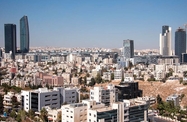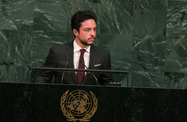The Jordanian government is looking to reduce its debt burden and jumpstart the economy through a combination of budgetary adjustments, a new medium-term economic strategy and international aid agreements.

Budget rethink
In mid-May the Cabinet announced its decision to cut this year’s JD8.8bn ($12.4bn) budget by JD204m ($288.1m).
In its original spending plan – effective since January 1 – the state’s current expenditure was set at JD7.6bn ($10.7bn), with capital spending at JD1.22bn ($1.7bn). The cut, however, will see the former reduced by JD100m ($141.2m) and the latter by JD74.1m ($104.6m).
The revisions come as part of an attempt to further reduce the kingdom’s debt-to-GDP ratio, something that has shown signs of improvement in recent months, falling from 95.1% at the end of last year to 94.1% by April, when debt stood at JD26.2bn ($37bn).
Despite the recent improvement, public debt has become an ever-increasing burden since the financial crisis of 2009, rising from 65% of GDP in 2010 to its current level.
A new plan
The recently released Jordan Economic Growth Plan (JEGP) 2018-22 also looks to address the issue of debt and how to reinvigorate the economy, which has seen GDP growth fall from an average of 6.5% in the last decade to 2.5% between 2010 and 2016.
To achieve this, the blueprint outlines 95 policy actions and 85 government projects with an estimated cost of $9.7bn, as well as 27 private sector investments valued at $13.3bn.
Strategic sectors targeted for investment and reform under the plan are tourism, agriculture, manufacturing, electricity and water, transport, ICT and construction.
The JEGP’s success will also be measured by the extent to which the aforementioned industries can contribute to improved employment rates, with unemployment climbing from 12.5% in 2010 to 15.25% last year – largely a result of the 1.3m Syrian refugees that Jordan hosts, 90% of whom have entered the labour market.
The macroeconomic targets of the JEGP also dovetail with the longer-term blueprint Jordan Vision 2025, which was launched in 2015. While the 4.9% growth rate targeted this year under Vision 2025 does not look like it will be met, the JEGP aims to put the country back on track to achieving the 6.5% economic expansion laid out in the plan.
Figures from the Central Bank of Jordan show that in the first quarter of the year the kingdom registered year-on-year GDP growth of 2.2%, with the IMF forecasting that growth will hit 2.3% this year, up from 2.1% in 2016.
EFF facility on track
Seen as a key facilitator of Jordan’s economic recovery, the IMF’s $723m, three-year extended fund facility (EFF) was approved in August of last year. A total of $72.3m of the EFF was disbursed immediately, with the remaining amount to be delivered over the duration of the programme, subject to reviews.
The first of these was completed at the end of last month, when the IMF praised Jordan’s government for its commitment to following monetary policy and reducing the fiscal deficit.
“The authorities are committed to continue with a gradual and steady fiscal consolidation to bring public debt towards more sustainable levels,” Mitsuhiro Furusawa, deputy managing director and acting chair of the IMF, said in a statement made last month. “To help public finances rest on a sounder foundation, the removal of exemptions on the general sales tax and custom duties will continue over the programme period,” he added.
To this end, further reforms planned under the JEGP involve creating a tax clearing house, simplifying customs procedures, and limiting tax evasion through the construction of an e-database and stricter penalties for avoidance.
Following last month’s review, the IMF released another $71m, bringing total disbursements under the programme to roughly $142m.
International aid
Further support was received in mid-May, when the US approved a $1.3bn aid package for Jordan. According to Imad Fakhoury, minister of planning and international cooperation, the money will help support the development of the strategic sectors targeted by the JEGP.
The US has not been Jordan’s only external benefactor in recent months, as at the end of June, the kingdom signed agreements totalling $52.8m with the World Bank and the Japan Social Development Fund (JSDF).
The World Bank deal comprised a $36.1m soft loan and $13.9m grant from the Concessional Financing Facility – launched last year by the bank – and will be funnelled toward the budget, while the JSDF’s $2.8bn grant will help provide integrated social services for programmes targeting Jordan’s youth.



